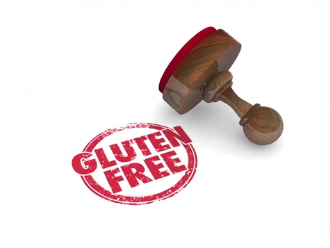| "Descrizione" by Al222 (20724 pt) | 2023-Dec-31 18:36 |
Review Consensus: 8 Rating: 8 Number of users: 1
| Evaluation | N. Experts | Evaluation | N. Experts |
|---|---|---|---|
| 1 | 6 | ||
| 2 | 7 | ||
| 3 | 8 | ||
| 4 | 9 | ||
| 5 | 10 |
Mandatory therapy for coeliacs consists of the abolition of gluten from the diet.
Components that help celiacs are substances and foods that can be safely consumed by those with celiac disease. Here are some examples
- Gluten-Free Foods. Products specifically formulated without gluten, such as gluten-free bread and pasta.
- Naturally Gluten-Free Flours. Like rice, corn, buckwheat, amaranth, quinoa, and teff flours.
- Fresh Fruits and Vegetables. Naturally gluten-free and rich in nutrients.
- Fresh Meat and Fish. Unprocessed and without added marinades or seasonings containing gluten.
- Pure Dairy Products. Milk, cheese, yogurt, and butter without additives or flavorings containing gluten.
- Legumes. Beans, lentils, and chickpeas are naturally gluten-free and rich in protein and fiber.
- Nuts and Seeds. A natural source of healthy fats and protein, gluten-free.
- Natural Oils and Fats. Like olive oil, coconut oil, and clarified butter, free of gluten.
- Pure Herbs and Spices. Not contaminated with additives containing gluten.
- Naturally Gluten-Free Beverages. Such as water, pure coffee, and unflavored tea.
The reports provided on Tiiips website are for informational purposes only and should not replace medical advice. Always consult a healthcare professional before making health-related decisions.
Components that can contribute to or exacerbate celiac disease include various factors that can trigger reactions in people with this condition. Here are some examples
- Gluten. A protein found in wheat, barley, and rye, is the primary trigger of celiac disease.
- Cross-Contamination. Gluten-free foods can be contaminated with gluten if produced or prepared in shared environments.
- Unverified Processed Products. Processed and packaged foods may contain hidden gluten or traces of gluten.
- Supplements and Medications. Some may contain gluten as an excipient or contaminant.
- Mislabelled Foods. Products that are not correctly labeled as gluten-free or have misleading labels.
- Consumption of Oats. Although naturally gluten-free, oats can be contaminated with gluten during cultivation or processing.
- Foods Fried in Shared Oil. Gluten-free foods fried in the same oil as gluten-containing foods can be contaminated.
- Condiments and Sauces. Some may contain gluten or be contaminated during production.
- Alcoholic Beverages Derived from Grains. Beers, whiskeys, and other alcohols derived from gluten-containing grains.
- Over-Reliance on "Gluten-Free" Options. Assuming all options labeled as "gluten-free" are safe without verifying ingredients or production practices.
Studies
Triggered by the ingestion of gluten in genetically predisposed individuals, celiac disease is the most common genetically based food intolerance in the world, with a prevalence among approximately 1% of the general population. This enteropathy may appear at any age and is characterized by a wide variety of clinical signs and symptoms that go well beyond the gastrointestinal tract. In young children, gastrointestinal presentations are common and include chronic diarrhea, failure to thrive, and abdominal distention; however, extraintestinal manifestations are becoming increasingly more common. They include numerous conditions such as dermatitis herpetiformis, anemia, dental enamel hypoplasia, recurrent oral aphthae, short stature, osteoporosis, arthritis, neurologic problems, unexplained elevation of transaminase levels, and female infertility. Therefore, diagnosing celiac disease requires a high degree of suspicion, followed by correct screening and a confirmatory test with an intestinal biopsy. After diagnosis, a strict gluten-free diet must be followed, which in most cases will bring a marked improvement of symptoms. However, there are important compliance and quality-of-life problems, especially in adolescents (1).

Recently, an interesting study focused on gliadine, a peptide responsible for celiac disease and other disorders found in wheat gluten, suggesting an alternative treatment to the abolition of gluten. In practice, an enzyme treatment on wheat gluten could prevent coeliacs from the gluten-free diet (2).
References_____________________________________________________________________
(1) Guandalini S, Assiri A. Celiac disease: a review. JAMA Pediatr. 2014 Mar;168(3):272-8. doi: 10.1001/jamapediatrics.2013.3858.
(2) Marino M, Casale R, Borghini R, Di Nardi S, Donato G, Angeloni A, Moscaritolo S, Grasso L, Mazzarella G, Di Tola M, Rossi M, Picarelli A. The effects of modified versus unmodified wheat gluten administration in patients with celiac disease. Int Immunopharmacol. 2017 Jun;47:1-8. doi: 10.1016/j.intimp.2017.03.012.
| Evaluate |

